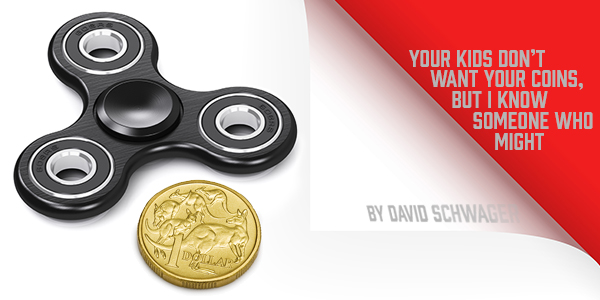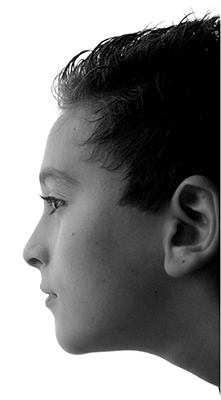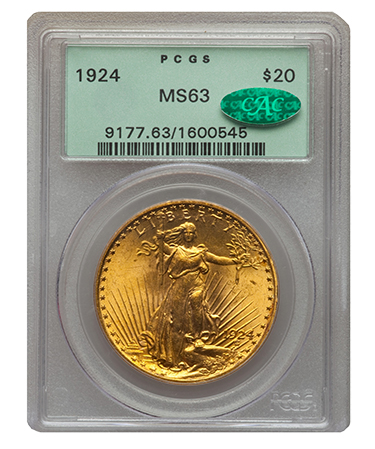
By David Schwager for CoinWeek …..
Kids today don’t care about coins. That’s not a problem.
A recent CoinWeek article discussed three events at the 2017 World’s Fair of Money where goodhearted dealers and collectors tried to bring youngsters further into the hobby. Yes, it’s true that the children of today are the coin collectors of the future. But this is true in that children are the future of any field. One could just as well say that the children of today are the pharmacists of the future, or the cashiers of the future or the car thieves of the future.
Well-meaning numismatists put emphasis and place hopes on children for reasons that are entirely natural and healthy. First, it is human nature to help children. Children need education to become functioning adults and there is a natural impulse to provide that education. Most of us cannot resist the temptation to give people, even people just a few years younger than we are, some of our wisdom – whether they want it or not.
Second, many veteran collectors remember how they began their coin careers as pre-teens and want to help people start the same fulfilling journey in the same way. Collectors start as children, they reason, so I need to help children start collecting.
Lastly, let’s admit that we focus on children because it is easy. Give children some low-value coins that they’ve never seen before and, unlike most adults, they will be grateful for both the coins and the attention. A Scout patch or badge clinic will attract a few dozen teens at a large show more easily than any promotion could draw the same number of adults.
These efforts are good and the motives are admirable, but consider how often you have heard collectors lamenting their unsuccessful attempts to interest their children and grandchildren in their hobby. Younger children may want coins at first as a connection with their parents and grandparents, but as those ties naturally grow looser, the kids may ask to cash in their collections.
That natural fading of interest is often a part of even the dedicated collector’s story. Many of us gave up collecting as teenagers but picked it back up 20-40 years later. So while no one suggests we should stop, showing coins to youngsters might help make collectors in the mid-21st century but it won’t necessarily help the hobby today.
 Besides, in today’s world not many (American) children are coin collectors, meaning only the rare iconoclastic child willing to dedicate himself to a field about which none of his peers care will become a dedicated hobbyist. Children will always collect, and most have casual collections (accumulations?) of stones, toys, shells or whatever catches their interest. The stamp and coin album, however, is no longer the middle American childhood staple it once was. Don’t expect modern childhood to be like yours.
Besides, in today’s world not many (American) children are coin collectors, meaning only the rare iconoclastic child willing to dedicate himself to a field about which none of his peers care will become a dedicated hobbyist. Children will always collect, and most have casual collections (accumulations?) of stones, toys, shells or whatever catches their interest. The stamp and coin album, however, is no longer the middle American childhood staple it once was. Don’t expect modern childhood to be like yours.
What should we expect, then? What should children and teens expect from established collectors, dealers, and the rest of the hobby?
They should definitely expect to be taken seriously. Let’s continue to welcome young enthusiasts, including them in our clubs and answering their questions. Let’s not, however, put the burden of the future of numismatics on their shoulders. We should also take care to keep young numismatists, even those we mentor, at a certain appropriate distance. The name of Walter Breen is not as obscure as we in the hobby might assume.
If, however, an avid collector does want to bring new members into the numismatic fraternity, the best recruit is the one we are least likely to see because he or she hides in plain sight: the middle-aged man or woman. I know that the 35–55 age bracket is a key demographic for CoinWeek. As the demands of a young family and establishing a career subside, our potential collector looks about for things to do with his or her new-found time and money, possibly starting or re-starting a hobby.
The difficulty is in finding and nurturing this possible new participant in the hobby.
Finding is difficult because we cannot tell when he or she becomes ready for the message. The shift in attitude and mindset is an internal change with few outward signs.
Nurturing is difficult because this is the type of person least likely to inspire the natural human desire to lend a hand. As a man or a woman in the prime of life, this collector is, quite reasonably, expected to take care of him or herself. Both the desire to start and the need for knowledge remain hidden. This may be why so many coin collectors remain solitary, self-directing their hobby without the social aspects of conventions and clubs that can be so fulfilling.
To bring this potential collector into the hobby or the beginning collector into the community, we cannot ignore the opportunities our own lives may occasionally provide. Making new collectors takes thoughtful, one-on-one work with people we already know. If you choose to take on this work, look for prospects with some combination of these characteristics:
- Time and money to devote to a hobby
- A curious and intelligent nature
- Was a collector of some type as a child
- Interest in saving or building wealth; if they are bullion buyers, your work is already half done
- Interest in history
- Owner of antiques or other collectibles
The pitch should be short and gentle, involving more listening than talking. Mentioning your interest in coins and allowing the prospect to talk about his or her own interests is enough. As an expert and enthusiast, you will be tempted to talk extensively, use jargon, show your enthusiasm, and invite your acquaintance to dive headfirst into numismatics. Resist those temptations. Bring up the subject, and, if there’s no interest after a few tries, move on.
 Only if the prospect shows more than polite interest, consider a 20-second simplified show and tell.
Only if the prospect shows more than polite interest, consider a 20-second simplified show and tell.
When I showed a co-worker a 1924 Saint-Gaudens $20 double eagle (PCGS MS63 CAC), I told him it was pretty, made of gold, and part of my emergency savings. I did not explain generic gold, talk about European hoards of American gold coins, discuss the artist behind the coin, wax poetic about the early 20th century renaissance in US coin design, or mention the terms PCGS, MS63 or CAC.
Realize that most of the time, your acquaintance will be interested enough to listen (provided you are well-mannered enough to also listen to him or her talk about their own interests) but not interested enough to join you. When a friend invited me to join his hobby of weightlifting, I politely declined, and most people will do the same when you bring up your own hobby.
Before going to this effort to promote our hobby to either children or adults, consider that numismatics may not actually need an active recruiting program. In the same way that there will always be sports fans and always be film buffs and always be painters, there will always be coin collectors. Everyone eats, walks, and uses a car, so hobbies such as baking, hiking, and classic cars will not go away. Everyone uses money, so owning remarkable coins and currency will always have an appeal.




